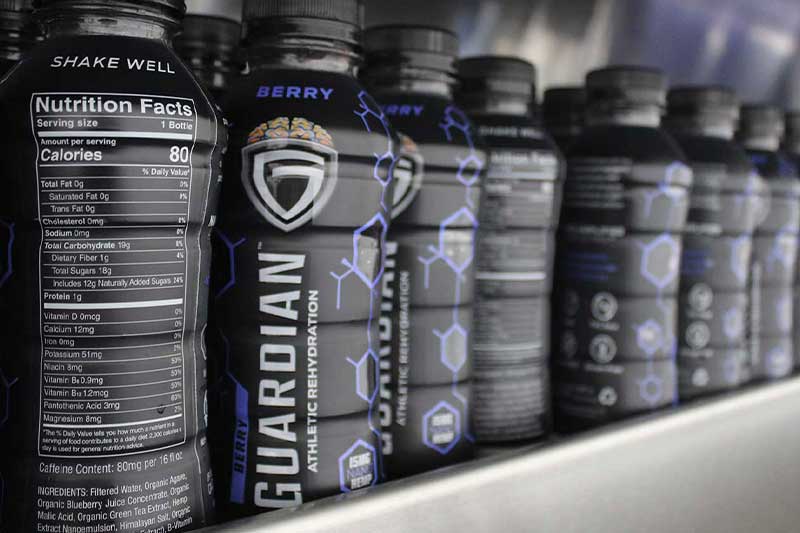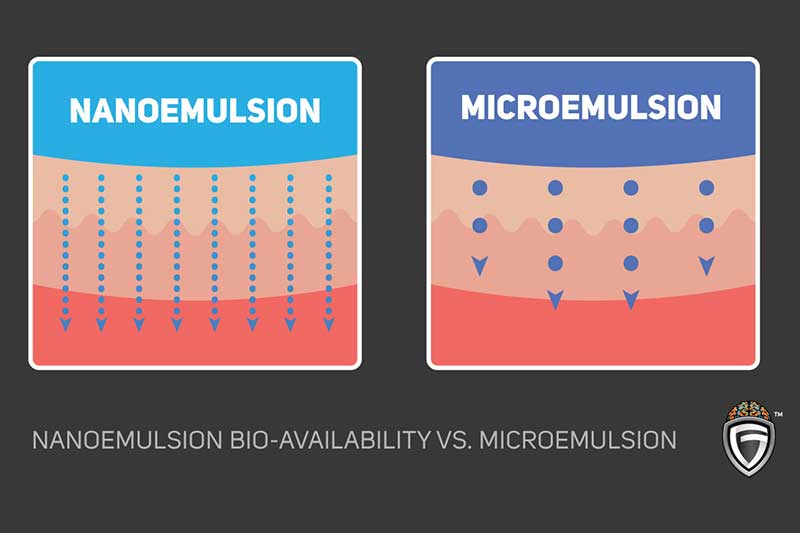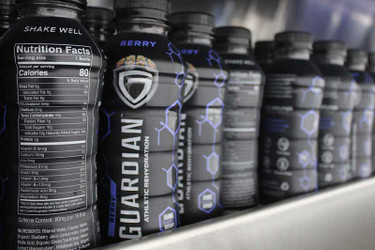Nano and Micro CBD: How does size impact Bio-availability?
Posted by Guardian Athletic on Aug 05, 2020

CBD is available in many forms, including tinctures, edibles, capsules, and vape oils. The various means of consumption make CBD a versatile compound. With CBD products, you can cater to your supplement preferences, formats and wellness goals.
How you consume CBD, choice of delivery method, will determine the strength and distribution of CBD in your body. How you take CBD also has an effect on the bio-availability of the compound. You will hear a lot about bio-availability from the numerous CBD products, and it is an important concept to understand. Technically, the bio-availability of a substance is the percentage that іѕ absorbed into the bloodstream after any other processing in the body. More simply it is how much of the CBD you actually benefit from.
Does Size Matter?
While the bio-availability percentages vary between studies, there is a commonality between many and believe it or not these studies suggest that it may come down to size. Here is an overview of the two most common sizes of CBD.
Microemulsion
Under this method, the CBD particles are broken down into droplets. The size of these droplets ranges from 100 to 5000 nano-meters. This process involves the use of high amounts of surfactants to get CBD oil to bind with water. The thought here is to form these droplets by solubilizing the CBD oil in water. Due to the higher use of surfactants, the microemulsion method is less desirable due to taste implications and potential impacts to the consumer.
Nanoemulsion
Under this method, the CBD oil is broken down into tiny particles ranging between 10 – 200 nm in size. These particles are nano emulsified to be more precise. The nanoemulsion method also requires a lower use of surfactants. This, in turn, reduces the potential side-effects of the user's health. Many CBD brands use natural surfactants which help to keep the product organic. This again reduces undesirable effects to the user’s health.
A good analogy would be to think of a body’s digestive track, where most of the absorption of CBD occurs, like a chain link fence. If Micro CBD is a volleyball and Nano CBD is a golf ball, one can easily visualize how Nano is advantaged in making it through the analog of a digestive-tract fence for higher levels of absorption.
Advаntаgеѕ of Nаnо CBD

Increases Bio-availability:When ingested, CBD particle nutrient efficacy is reduced when passing through places like the stomach, intestines, and liver. Because the particle is too large, the body is not completely able to absorb it. Thus, parts are lost on the way to where it needs to go. Due to microscopic size of Nano CBD, it is absorbed into the body more efficiently. Higher bioavailability of Nano reveals a lot of hidden potential of cannabinoids.
Less Amount Needed: With Nano CBD, less is more. Before your body filters out the nutrients from the CBD particle, Nano CBD is able to be almost completely absorbed.
Water Soluble: Water soluble CBD plays into bio-availability, allowing the product to be absorbed more efficiently but it also adds versatility to CBD. There are now more ways to use the cannabinoid thanks to the water soluble nature of Nano CBD.
Nanoemulsions vs. Microemulsions:
Nanoemulsions have a bright advantage over microemulsions: the amount of surfactants needed for the water-soluble preparation is up to 10 times lower than surfactants needed to make microemulsions. This is great because the less surfactant that іѕ needed means less dilution of the solution, aka less dilution of the CBD product you're consuming.
Conclusion: Nano CBD is the best
The bottom line is that nano has higher bioavailability, uses less potentially harmful surfactants and gives the consumer the most bang for their buck when purchasing CBD across product types because they can use less to get the same impact.
References:
https://www.ncbi.nlm.nih.gov/pmc/articles/PMC2689518/

